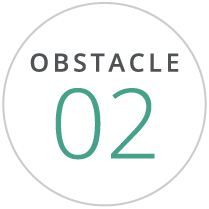The Top 7 Challenges Deskless Workers Face

By Sandra Moran, CMO at WorkForce Software
This blog provides highlights from a previously published article on Nasdaq.com
The deskless shift worker is a unique type of employee. Well…not unique in numbers. In fact, deskless workers account for almost 80% of all workers worldwide. But their positions, responsibilities, and needs are incredibly unique. Their workplaces, tasks, skills, and travel are all liable to change daily, making it harder for their roles to be supported by standard workforce management technology. While their co-worker counterparts in the office have seen a flood of new tech to help them work remotely, the deskless worker has seemingly been expected to overcome obstacles by themselves.
These are the major obstacles that deskless workers face. Are there tools that could be implemented to assist in the roles? Let’s dig deeper into the obstacles these employees struggle with.

Scheduling (Flexibility)
Many industries involving deskless workers still run on a shift schedule, some organizations even operating 24 hours a day: the day shift (9am-5pm), the night shift (5pm-1am), and the overnight shift (1am-9am). These shifts can change every week based on worker availability and industry demand. As you can imagine, this can make it very difficult for employees to plan their personal lives as they’re often at the mercy of their work schedules. Research repeatedly shows that workers today crave flexibility in their schedules, often listing it as more important than overall compensation.
With a modern workforce management system, flexibility is more easily achieved, as company requirements can be blended with important employee data like personal leave, availability hours, and even skill level can be taken into account during scheduling.

Communication
The modern workplace runs on computers, yet deskless workers rarely have a company laptop to access information and engage with managers. Many don’t even have a corporate email address. This creates communication issues, as workers may take matters into their hands and communicate through unsecure 3rd party apps to get the answers they need. Communicating about daily tasks or troubleshooting with management should not have to be overly cumbersome. Many of these workers also must personally contact their office to find out their own schedule once it has been filled.
With a digital communication solution, workers and management can contact one another easily and securely, and HQ can not only communicate with their teams efficiently, but even see notifications that messages have been received and seen.

Task Management
Every worksite has tasks that need to be performed. Maintenance crews need to respond to a downed powerline, manufacturers need to include new safety processes, or retailers have to set up for a new store promotion on any given day. The best way to keep these workers on track is to digitize tasks with easy access to instructions, video tips or photo examples, and integrated communications to enable interactions in the event there are questions or issues with completing the work, when and where they’re needed. A digital task list can be built, sent, received, and checked-off as the worker proceeds, keeping managers in the loop of progress as it happens.

Digital Natives (Lack of Technology)
We’re living in an historic time. For the first time ever, we have five generations of people in the workforce: the Silent Generation, Baby Boomers, Gen X, Millennials, and Gen Z are all active in the workforce. Despite Gen Xers and beyond growing up with digital technology in their daily lives, they often work for organizations that do not operate their business with digital tools equivalent to those we use in our personal lives every day. Even the older Boomer and Silent generations have become more accustomed to using technology in their daily work and could have their positions rendered much less difficult with the implementation of more tech-assisted functions in the workplace.

Distant from Company/Managers
Deskless workers don’t always have direct access to their managers or company leadership on a daily basis and can often feel left out of the loop with co-workers and the business as a whole. Digital workforce management not only gives workers autonomy over their own roles (an easy place to access insurance information, request time-off, or interact with other workers), it keeps them connected in a way that is simply impossible to achieve with infrequent corporate communications and intermittent management interactions.

Training and Development
Studies show that training new and existing workers is becoming increasingly difficult. Many businesses implement training during the early part of employment, where studies show most of the knowledge is forgotten quickly. With increases in automation, continuous improvement, and the pace of change, having onsite workers with ready access to proper training is critically important. If only there was a way to continually train workers, reinforce their knowledge with the ability to easily reference training materials, and even to up-skill existing workers…
With digital workforce management, training videos and documents can be sent straight to workers’ personal devices, to be referenced as needed for “in-the-moment” training. This keeps organizations flexible, agile, and prepared to address dissemination of information and training as needs arise.

Time and Attendance
The traditional punch card method is a hundred years old. Fortunately, most organizations have evolved, yet many still have numerous manual steps, spreadsheet-based process, and system workarounds that can create payroll headaches, prevents optimization and takes managers time and effort to make corrections. A digital method of time-tracking helps optimize the use of labor and overtime, supports time-related compliance, and properly administers attendance.
Every job comes with challenges. But companies can do more to minimize the barriers to make work easier for employees and managers – more closely matching the easy-to-use apps that are an essential part of our personal lives. The challenges listed in this article aren’t insurmountable issues that one day may have a solution: the solutions are here, now, and ready to support your teams if you’ll embrace the available technologies.
Explore Modern Workforce Management and learn how these obstacles are being navigated better than ever with digital workforce management solutions.
Subscribe to The WorkForce Blog
Learn the art and science of maintaining productive, happy, engaged employees.
Discover More
Nucleus Insights from WorkForce Customers Research Note
Nucleus Research interviews WorkForce customers who validate why we’re ranked the #1 WFM enterprise vendor for 10 consecutive years.
Elevate Employee Experience: Checklist for Operational Leaders
Get the practical steps and technology functionalities operation leaders need to improve their employees’ work experiences.
Streamlining Complex Workforce Compliance Requirements Boosts Productivity
Discover how workforce compliance software helps EMEA organisations navigate complex legislation, enhance compliance and boost operational efficiency.



